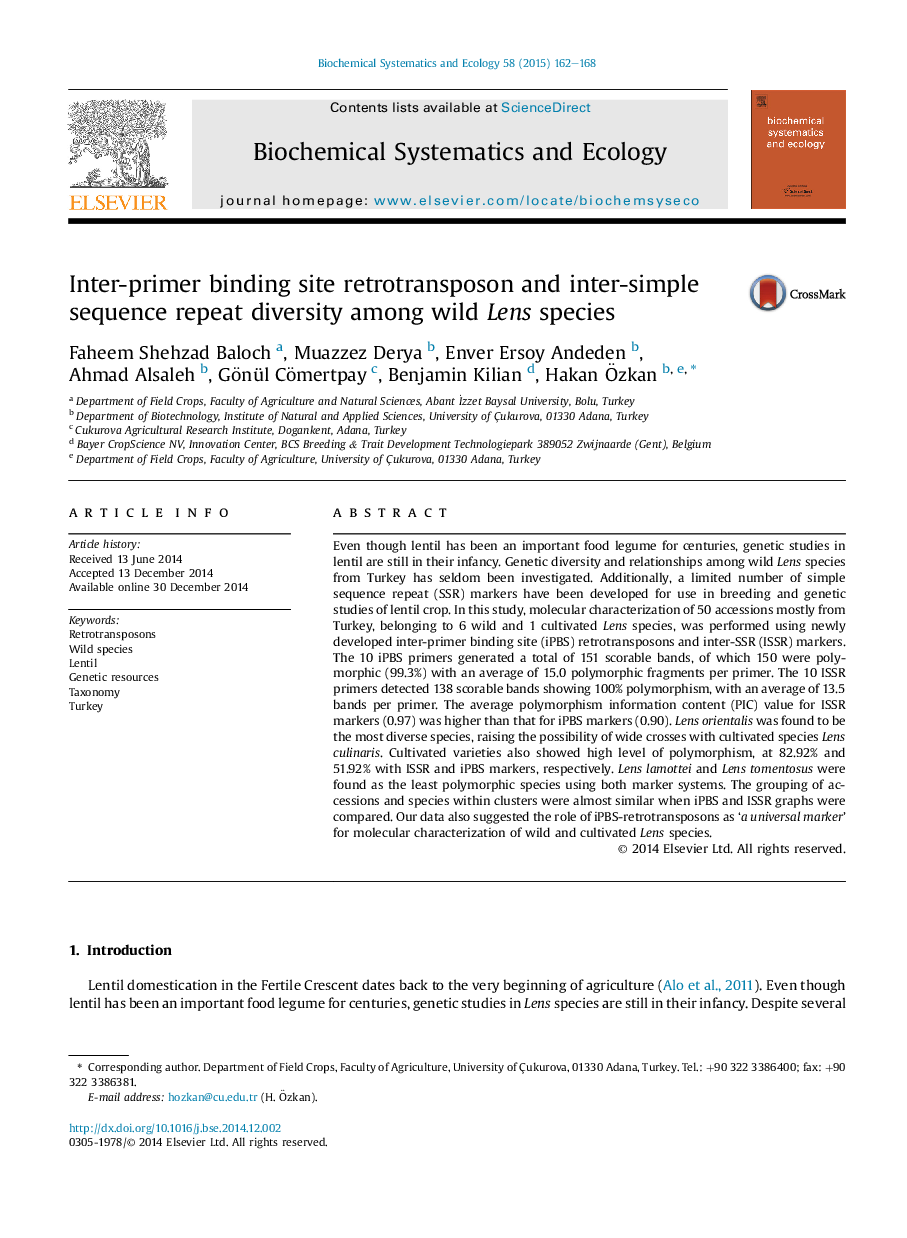| کد مقاله | کد نشریه | سال انتشار | مقاله انگلیسی | نسخه تمام متن |
|---|---|---|---|---|
| 1353881 | 1500408 | 2015 | 7 صفحه PDF | دانلود رایگان |

• Genetic diversity of Lens species was investigated using iPBS retrotransposons and ISSR DNA markers.
• Grouping and clustering obtained with both marker systems were consistent and overlapping each other.
• L. orientalis was the most diverse species, raising its possibility of wide crossed with cultivated lentil.
• Paper also describes the utility and role of iPBS retrotransposons for molecular characterization lens species.
Even though lentil has been an important food legume for centuries, genetic studies in lentil are still in their infancy. Genetic diversity and relationships among wild Lens species from Turkey has seldom been investigated. Additionally, a limited number of simple sequence repeat (SSR) markers have been developed for use in breeding and genetic studies of lentil crop. In this study, molecular characterization of 50 accessions mostly from Turkey, belonging to 6 wild and 1 cultivated Lens species, was performed using newly developed inter-primer binding site (iPBS) retrotransposons and inter-SSR (ISSR) markers. The 10 iPBS primers generated a total of 151 scorable bands, of which 150 were polymorphic (99.3%) with an average of 15.0 polymorphic fragments per primer. The 10 ISSR primers detected 138 scorable bands showing 100% polymorphism, with an average of 13.5 bands per primer. The average polymorphism information content (PIC) value for ISSR markers (0.97) was higher than that for iPBS markers (0.90). Lens orientalis was found to be the most diverse species, raising the possibility of wide crosses with cultivated species Lens culinaris. Cultivated varieties also showed high level of polymorphism, at 82.92% and 51.92% with ISSR and iPBS markers, respectively. Lens lamottei and Lens tomentosus were found as the least polymorphic species using both marker systems. The grouping of accessions and species within clusters were almost similar when iPBS and ISSR graphs were compared. Our data also suggested the role of iPBS-retrotransposons as ‘a universal marker’ for molecular characterization of wild and cultivated Lens species.
Journal: Biochemical Systematics and Ecology - Volume 58, February 2015, Pages 162–168